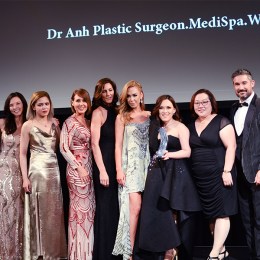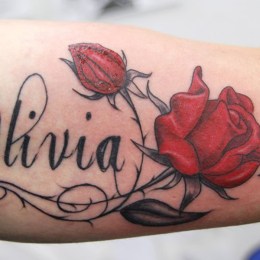There was once no such thing as a magic wand for spot fat reduction. Now there just may well be. Jenni Gilbert looks into the world of body sculpting device technology.
As little as five years ago, if you had stubborn fat deposits disproportionate with the rest of you – a pot belly, thigh “saddlebags”, “chicken wings” under the bra line or extra padding on the hips, for instance – it was really just tough luck. However strenuously they diet and exercise, most people find they will lose weight and fat “globally”, not from a particular area that bothers them. Yes, that would reduce, too, but only in proportion with the rest of the body. There was and is, of course, surgical liposuction.
Yet many people are daunted by that idea, or just don’t want invasive surgery with downtime, pain or discomfort, bruising and swelling, and having to wear compression garments and restrict many activities for perhaps weeks. But now we have seen a proliferation of ever-more-sophisticated non-surgical body contouring devices rolled out to market in Australia, giving consumers the option to “design” their own shapes in treatments that take as little as a lunch hour with few, if any, side effects.
If you are looking for a specialty for your salon, spa or clinic, body contouring, fat and cellulite reduction are certainly popular and lucrative areas to consider and ones that would bring a great deal of satisfaction in seeing people’s bodies (and often lives) transformed by the changes. The choice of treatments could be localised adiposity (ie. stubborn fat pockets), cellulite smoothing or skin tightening – or, again, a combination. The technology will be different depending on what you are mainly targeting. It could be ultrasound, radiofrequency (RF), infrared, cryotherapy, vacuum rolling, low level laser or a combination. From there the next step is to choose equipment that fills a need for your particular market and suits your level of expertise and qualifications.
We look at the technologies and treatments available and devices you might want to consider. You will also find that some device platforms offer body contouring options along with a range of other modalities, such as skin rejuvenation and correction, making them even better investments. The following modalities can be used alone or as an adjunct to enhance each other’s results. Devices of varying strength are available to carry out these treatments, some of which are designed for doctor-operated practices. There are suppliers who will sell only to doctors in these cases, and others who will consider spas and clinics without doctors if would-be operators undergo appropriate training. A reputable supplier will guide you in the right choice for your expertise and business goals.
Here is a guide to the energies harnessed in body shaping devices:
RADIOFREQUENCY
RF is a popular treatment for firming facial skin and minimising lines and wrinkles, but it is also widely used to reduce skin laxity in regions such as the arms, abdomen, thighs, and buttocks and help reduce fat deposits.
It can be quite uncomfortable on the face but is generally reported to create little discomfort when used on the body. RF is an ideal option for people who have moderately sagging skin but do not wish to undergo surgery. It is also a great adjunct to enhance results of other fat reduction procedures.
No anaesthetic or injections are required, nor downtime. RF energy heats the skin’s outer layer, stimulating collagen beneath the surface. There is an immediate tightening after the first treatment (depending on the strength of the device) and the “old” collagen fibres retract under heat. New collagen continues to grow during the six months following a treatment procedure, so clients will see more dramatic results over the longer term.
ULTRASOUND
“Fat cavitation” using ultrasound waves is body sculpting that requires no anaesthetic or downtime, leaves no scars and causes little-to-no discomfort. Targeted ultrasound waves create bubbles in the liquid of the adipose (fat) cells that gradually grow and implode at certain size. As the membranes of fat cells do not have the structural capacity to withstand the vibrations, the effect of cavitation easily breaks them while sparing the vascular, nervous and muscular tissue.
The process is often likened to that of high-pitched noise shattering glass. After disruption of adipose cells, the fat in the form of triglycerides is released into the interstitial fluid between the cells, where they are metabolised and gradually eliminated in the normal body processes. Clients will usually notice a difference in their dimensions immediately but several treatments (the number depends on the type and strength of the device) will be spaced at regular intervals to achieve the desired result.
The client may not actually see the optimal result though until three or more months after the treatments have finished. Results, however, are long-lasting as the fat cells have been killed. But if clients eat and drink too much and do little exercise, their remaining fat cells will just get fatter and undo the good work.
LLLT, OR LOW LEVEL LASER THERAPY (INFRARED)
In systems harnessing LLLT, energy is directed into the target areas via electrode pads placed on the skin. The transmission of a low-level laser beam (650nm) brings about a chemical signal that alters the cell’s chemistry leading to the release of an enzyme called lipase. This liquifies triglycerides into free fatty acids and glycerol inside the fat cells which are released though channels in the fat cell membranes. These compounds are then transported to the body tissues and are metabolised to create energy. As per ultrasound cavitation, removal of the fat is through the body’s own mechanisms.
CRYOTHERAPY
This essentially involves freezing fat cells to death. The technology was discovered by Harvard University Medical School scientists nearly 20 years ago, after observing that babies who sucked on ice lollies to soothe teething pain lost fat in their cheeks. They used it as the basis of research for fat reduction devices. The main principle of cryotherapy is the targeting of fat cells exclusively and the elimination of their detritus through the body’s natural processes.
A cooling suction device is used to destroy the adipose (fat) tissue with a temperature just above the freezing point. By doing so, lipolysis is activated and fat cells are crystallised, a procedure which damages fat cells permanently. Optimum results are noticed two to four weeks after treatment. During the procedure, which requires no anesthetic, the patient experiences an almost pleasant sensation that numbs the treated area.




